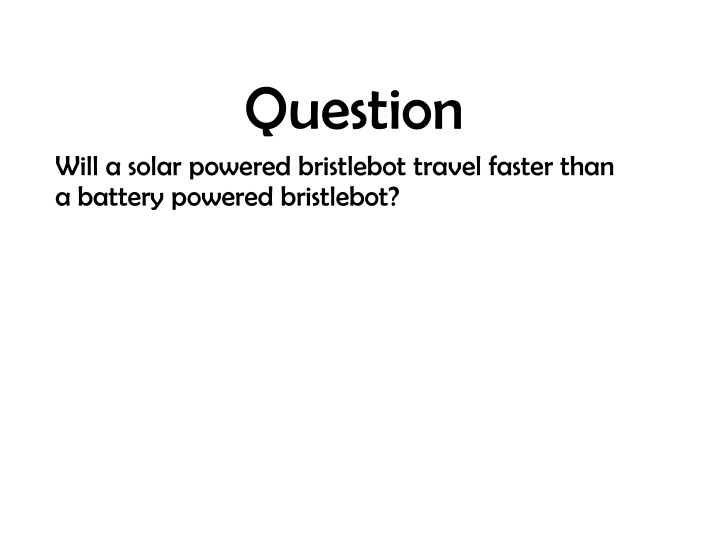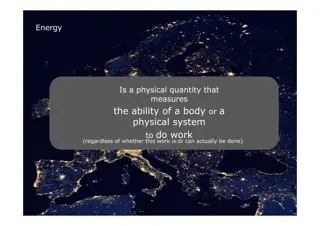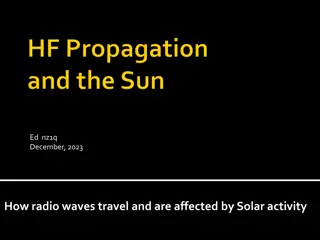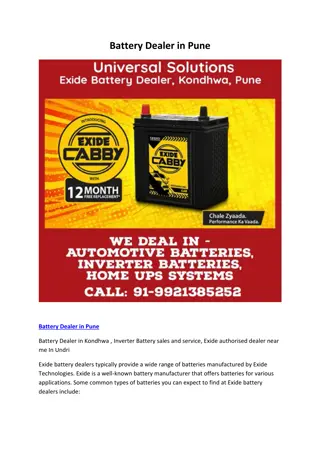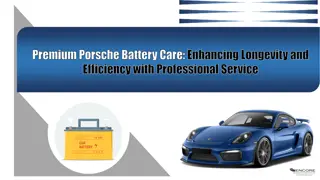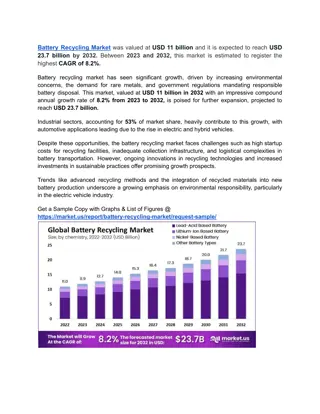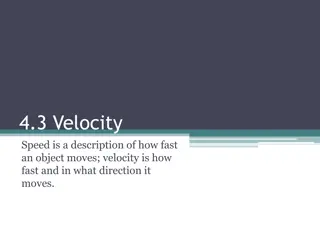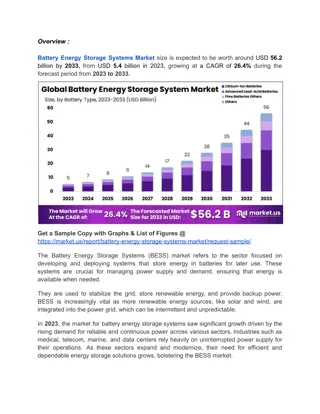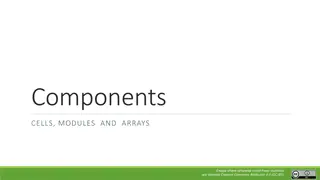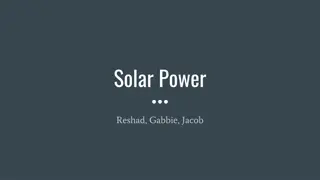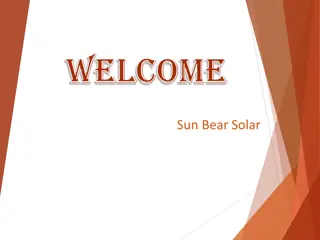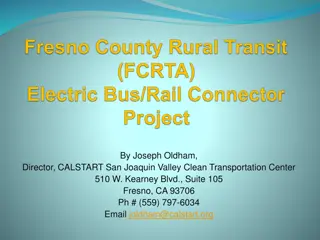Comparative Study: Solar vs. Battery Powered Bristlebot Speed Performance
This study compared the speed performance of a solar-powered bristlebot and a battery-powered bristlebot under different weather conditions. The hypothesis suggested that solar power would excel in sunlight, while battery power would be faster in cloudy or nighttime conditions. However, the results showed that the battery-powered bristlebot outperformed the solar-powered one in all weather conditions tested. The study provides valuable insights into the impact of power sources on robot speed.
Download Presentation

Please find below an Image/Link to download the presentation.
The content on the website is provided AS IS for your information and personal use only. It may not be sold, licensed, or shared on other websites without obtaining consent from the author.If you encounter any issues during the download, it is possible that the publisher has removed the file from their server.
You are allowed to download the files provided on this website for personal or commercial use, subject to the condition that they are used lawfully. All files are the property of their respective owners.
The content on the website is provided AS IS for your information and personal use only. It may not be sold, licensed, or shared on other websites without obtaining consent from the author.
E N D
Presentation Transcript
Question Will a solar powered bristlebot travel faster than a battery powered bristlebot?
Hypothesis In the sunlight, the solar powered bristlebot will have a faster rate on the track than the battery powered bristlebot. When tested at nighttime and when it's cloudy, the battery powered bristlebot will have a faster rate of time on the track than the solar powered bristlebot.
Materials Mini bread board 2x AAA battery holder AAA batteries (2) Mini vibration motors Toggle switch Mini solar cells (2) 1 inch red jumper wire 1 inch black jumper wire Two toothbrushes
Procedures 1. Use house hold items to make a straight track. 2. Set up a data table. 3. Assemble robot as per instructions 3. Take the robot and test it on a sunny day on the track, switch the power down down for battery 4. The place your bot on one side of the track and time it how long it takes to get from one side to another. 5. Repeat this 2 more times when it is cloudy And when it is nighttime. 6. Then repeat repeat step 3, 4, 5 but instead of battery powered bristlebot switch the switch up to go to solar powered.
Power Source Weather Conditions 1st 2nd 3rd Battery Full 15.45 15.46 15.50 Sunlight Battery Cloudy Battery Solar Panels Solar Panels Solar Panels 12.99 10.95 40.19 12.59 13.56 34.60 10.17 12.35 22.07 Nighttime Full Sunlight Cloudy 17.07 1:17.64 24.96 Nighttime 999.9 999.9 999.9
Background Research One very common source of energy for creating electricity is burning fossil fuels like, oil and coal. The Solar panels harness a big source of renewable energy; from the sun. We use tiny solar panels on smaller devices like USB cell phone chargers or even minature robots. The electricity we use has to be created by a source of energy. Electricity can be supplied directly to devices that plug into wall outlets , and it can also be stored in batteries. The solar panels produce the electricity that get's transferred into the battery!
Results & Interpretation The results that were collected indicated that the battery powe red bristlebot was the fastest in all three weather conditions. During the first trial, it was noticed (Full sunlight), the battery powered bristlebot was faster on three attempts. During the second trial (Cloudy) the battery powered robot was the fastest once again. When the solar powered robot was tested in cloud coverage, the solar robot went slower. On our third trial, (Nighttime) of course the battery won. So over all, the battery powered robot won!
Conclusion The hypothesis was not supported as a result of the experiment. The battery robot scored faster in all three weather conditions. It was thought that the solar powered robot would do better than the battery powered robot in full sunlight, but this did not happen . The solar powered robot may possibly have lost in full sunlight because it was later in the day and it was a little bit darker outside.
Resources "Finio,ben "."Build a solar-powered bristlebot". Science buddies,16 Oct. 2017.web.11 Dec.2017 https://www.sciencebuddies.comscience-fair- projects-//projects-ideas/Robotics/build-a-solar-powered-bristlebot> Woodford, C. (2014, May 14). Electricity. Retrieved August 22, 2014, from http://www.explainthatstuff.com/electricity.html Grusin, M. (n.d.). What is a Circuit? SparkFun Electronics. Retrieved July 31, 2014, from https://learn.sparkfun.com/tutorials/what-is-a-circuit Science Buddies Staff. (n.d.). How to Use a Breadboard. Retrieved June 23, 2016, from http://www.sciencebuddies.org/science-fair- projects/breadboard-tutorial U.S. Energy Information Administration. (n.d.). EIA Energy Kids Solar. Retrieved August 25, 2014, from http://www.eia.gov/kids/energy.cfm?page=solar_home-basics
Future Research With this particular robot, it is able to be programmed as a light tracking device. This could be included as a variable to compare with solar power.
